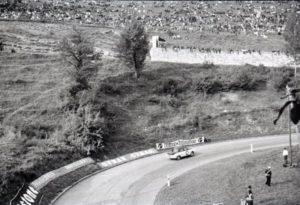 Le Clos du Doubs is a beautiful, unspoilt area of the Swiss countryside that is home to a medieval gem of a town: Saint-Ursanne. Here, environmentally friendly pursuits such as walking, cycling, canoeing, swin-golf or paragliding are popular ways of enjoying the beautiful region and its magnificent landscapes.
Le Clos du Doubs is a beautiful, unspoilt area of the Swiss countryside that is home to a medieval gem of a town: Saint-Ursanne. Here, environmentally friendly pursuits such as walking, cycling, canoeing, swin-golf or paragliding are popular ways of enjoying the beautiful region and its magnificent landscapes.
The Doubs, which runs through the entire region, is a river of rare beauty that brings to the area one of its culinary specialities: trout.
St-Ursanne is a picture-postcard medieval town boasting three magnificent gates: St Paul’s Gate in the west, St Peter’s Gate in the east and St John’s Gate in the south, along with an ancient bridge over the Doubs dedicated to St John of Nepomuk.
Most of Saint-Ursanne consists of buildings and bridges that date back to the Middle Ages, giving the town an irresistible charm. Its highlights include the 12th century collegiate church and cloister.
But what Saint-Ursanne is also known for in Switzerland and abroad is its Medieval Festival, which celebrates all things medieval in mid-July every other year, and the famous Saint-Ursanne – Les Rangiers International Hill Climb, which takes place every year on the third sunday of August.
The first Les Rangiers Hill Climb took place on May 16th, 1926, on a course that ran from Develier to Les Rangiers. In those days the race was open only to members of the Swiss Automobile Club (ACS).
The event quickly gained a reputation and in 1930 was included in the Swiss Hill Climb Championship calendar. The last race on this course took place on July 15th, 1951.
With the closure of the Porrentruy-Delémont road proving problematic, the decision was taken to move the race to a new course running from St-Ursanne to Les Malettes. This new route was raced for the first time on September 3rd, 1955.
In 1956 the event became international, attracting a succession of world-famous drivers including the World Champion Jim Clark, Jo Bonnier, Clay Regazzoni and Swiss national hero Jo Siffert. Other stars such as the actor Henri Grandsire, who played the driver Michel Vaillant in the TV series of the same name, Marc Surer, Jacques Laffitte, Guy Fréquelin, Charles Voegele, Henri Pescaloro and René Arnoux helped the competition gain the fame it enjoys today.
In 1972 the event was held as part of the European Hill Climb Championship for the first time (the only Swiss race in the championship). From then on, the race has been won by true hill climb specialists such as Xavier Perrot, Frédy Amweg, Marcel Tarrès, the late Lionel Régal and the current European hill climb championship star, Simone Faggioli.
Today the event’s reputation extends far beyond the borders of Switzerland and attests to the importance it has acquired.
On the third sunday of August the race brings 200 competitors to Saint-Ursanne, sixty of whom are competing in the European Hill Climb Championship. A dozen nations are represented each year.
The race is a favorite with drivers because of its very fast and technically demanding course. Indeed, it’s the fastest course in the European Hill Climb Championship. Over race weekend, nearly 7,000 spectators line the route, which features a number of safe zones open to the public, the most famous being ‘Le Petit Susten’.
No fewer than 300 people are involved in organizing this event, most of whom are volunteers generously giving up their free time to ensure that the doyenne of the European Hill Climb Championship can take place. The race is organized under the aegis of the Association Sportive Automobile de Saint-Ursanne – Les Rangiers.
In 2018, the race celebrated its 75th edition. A booklet has been produced telling the story of this legendary European Hill Climb Championship race.
After two blank years without a race (2020 and 2021) due to the COVID-19 pandemic, the organizers are hopeful that the situation will improve. They are making every effort to ensure that the 77th edition can take place under the best possible conditions on August 19th, 20th and 21st, 2022.
Over its 96 years of existence and the 76 editions of the race, 20 chairmen and 10 race directors have headed the race organizing committee. This shows the affection that the members of the ASA have for their favorite race.
Lastly, there are many fans who, after stepping on the grass of ‘Le Petit Susten’ to watch the racing cars flash past, return to St-Ursanne for a weekend or sample the local cuisine.
ASA St-Ursanne – Les Rangiers
L'unique manche Suisse du championnat d'Europe de la montagne. Une course de côte automobile à couper le souffle.

